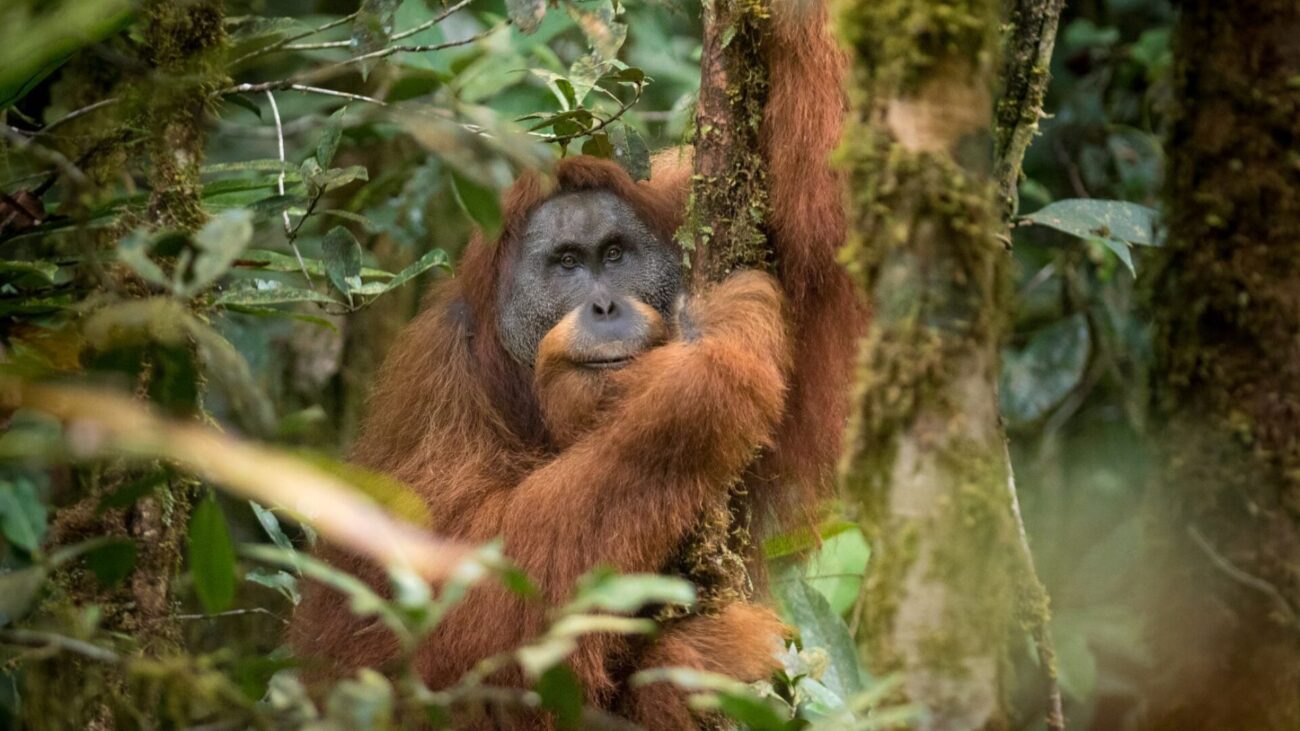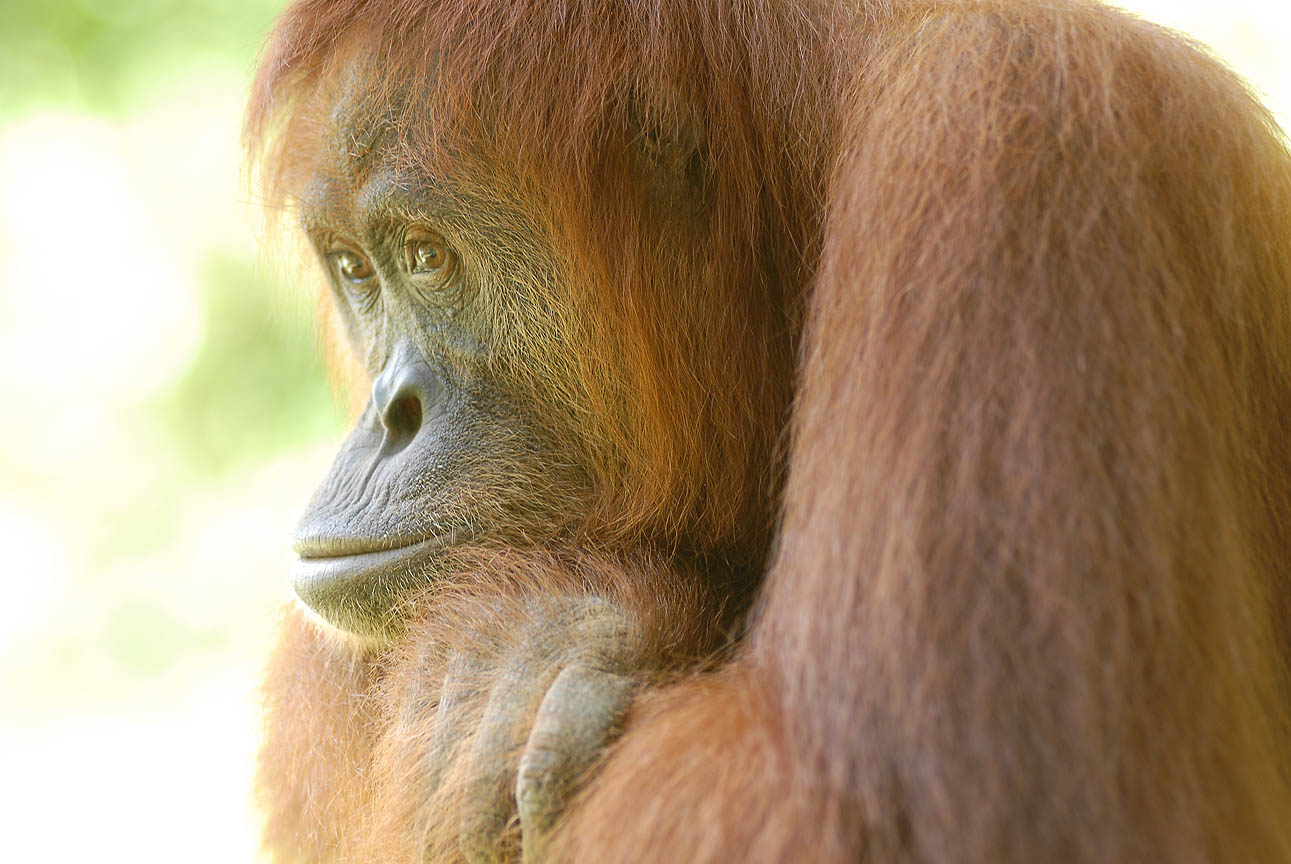
Photo credit: Andrew Walmsley
The search began in 2022 when local residents first reported sightings to the Orangutan Information Centre’s (YOSL-OIC) Human-Orangutan Conflict Response Unit (HOCRU).
The initial investigation, funded by SOS, found five orangutan nests but no actual sightings of the apes. Later that year, the team returned and discovered 17 active nests, confirming the presence of orangutans in this new area.
In 2023 and 2024, OIC and the North Sumatra conservation department (BKSDA) joined forces to document the apes. However, it was not clear whether the individuals were Sumatran or Tapanuli orangutans. This led to DNA analysis of fecal samples, which delivered the breakthrough: the apes were confirmed as Tapanuli orangutans.
Subsequent monitoring, including thermal drone imagery, showed signs of wider movement across nearby forest patches. The process culminated in September 2025, when OIC returned with a journalist and documented a mother and baby Tapanuli orangutan.
The Tapanuli orangutan (Pongo tapanuliensis) is the world’s most endangered great ape. The species was not known to science until its formal description in 2017. They are smaller than their Sumatran relatives but share similar long, reddish hair. They are also defined by their unique skull structure and vocalisations.
Until now, Tapanuli orangutans were only found in the remote Batang Toru ecosystem in North Sumatra. With fewer than 800 individuals remaining across the roughly 105,000-hectare habitat, Tapanuli orangutans are the world’s rarest ape.
This discovery brings renewed conservation urgency for Tapanuli orangutans. These individuals are under immediate risk, and every individual counts for such a critically endangered species.
The Lumut Maju peat swamp is outside protected areas, making it vulnerable to land-use change and forest fragmentation. The lack of protected status means the forests are rapidly being cleared for oil palm plantations, further shrinking the orangutans’ habitat.
When orangutan populations become isolated through forest fragmentation, they face genetic inbreeding and weakened resistance to disease. For this reason, small populations are often termed ‘functionally extinct’ – surviving for now but heading towards extinction in the long term.
For an orangutan population to be viable in the long-term, experts suggest the group would need a minimum 250 individuals. This means the new cluster is below the threshold for long-term survival. More studies are needed to determine the extent of Tapanuli populations found outside Batang Toru.
These new individuals are incredibly vulnerable – living in unprotected forest and isolated from other Tapanuli orangutan populations. Additionally, more extensive studies are needed to fully map the size and distribution of Tapanuli populations beyond Batang Toru.
Your continued support ensures that our frontline partners can protect, connect and rewild crucial habitat and secure a thriving future for wild orangutans. Please donate today to help this vital work continue.
You can help protect Sumatra's Orangutans. Click to get updates
